This post shows How To Find Your Home Decor Style: A Beginner’s Guide
Home decor is more than just matching furniture or pillows, it’s about how your space reflects who you are. When done right, it tells your story without too words.
We all dream of a home that feels comforting, peaceful, and truly ours. The right decor brings satisfaction and pride, especially when we see how our space comes together.
With so many styles like boho, minimalist, and modern, it’s easy to get overwhelmed. Social media is full of beautiful home decor, but it can leave you unsure about where to start.
Finding your style can be a journey, one of trial and error. You want your home to look good, but more importantly, you want it to feel like you.
I remember when my friend Nina moved into a new apartment in Africa. The place was nice, but it didn’t feel like her. She wanted a home that was calm and reflected her personality.
We worked together to make her space feel just right, choosing modern touches for the living room and minimalist decor for the bedroom.
For me, my bedroom is where I relax and unwind. I love changing the colors and accessories based on my mood. That’s my way of personalizing the space.
I’ve always loved seeing how my friends and family style their homes. Every space tells a story. That’s why I fill mine with things that bring joy and reflect who I am.
Your style is a mix of your personality, culture, and experiences. Often, your home shows your vibe naturally, through the items you choose.
Location also plays a role in your decor. A farmhouse will feel different from a city apartment, and that’s perfectly fine. Your space should be true to you.
So, if you’re unsure where to start, don’t worry. The goal is to create a space that feels natural and comfortable, one that makes decorating feel like coming home to mama.
I hope this post helps you feel confident in choosing the aesthetic that truly represents you in your home.
Read through!
HOW TO FIND YOUR HOME DECOR STYLE
1. How Do I Decide My Decorating Style?
Deciding your decorating style is all about finding what makes you feel comfortable and happy in your space. Think about what kind of activities you enjoy, what colors and materials you are most naturally drawn to, and what kind of mood you want to create in your home.
You can also look at things you already like, the clothes you wear or the places you enjoy visiting. Pay attention to the colors, patterns, and designs that catch your eye.
It can serve as an inspiration. Once you have a few favorites, notice if there’s a common theme.
Trust your gut and go with what feels right for you.
Let’s look at some tips to help you discover your perfect style!
Look at Your Wardrobe:
One of the easiest ways to discover your home decor style is by taking a glance inside your closet. The colors, textures, and patterns you tend to like in your clothes often say a lot about your design taste too.
Color, texture, and pattern are the building blocks of your home’s overall vibe. These three elements set the tone and feeling of each room, if you’re going for cozy, bold, elegant, or playful.
There are so many options out there, endless shades, prints, and fabric styles to choose from. But maybe a plain white, minimalist space with sharp lines doesn’t reflect who you are. Maybe you want something with more character. Something that feels more like you.
So, start by asking yourself: what kind of feeling do I want this room to give me? Let’s say it’s your living room, do you want it to feel calm and cozy for evening wind-downs? Or bright and fresh to keep you energized, especially if you work from home?
The goal is to create a space that feels just as personal and expressive as your favorite outfit.
Use of Color
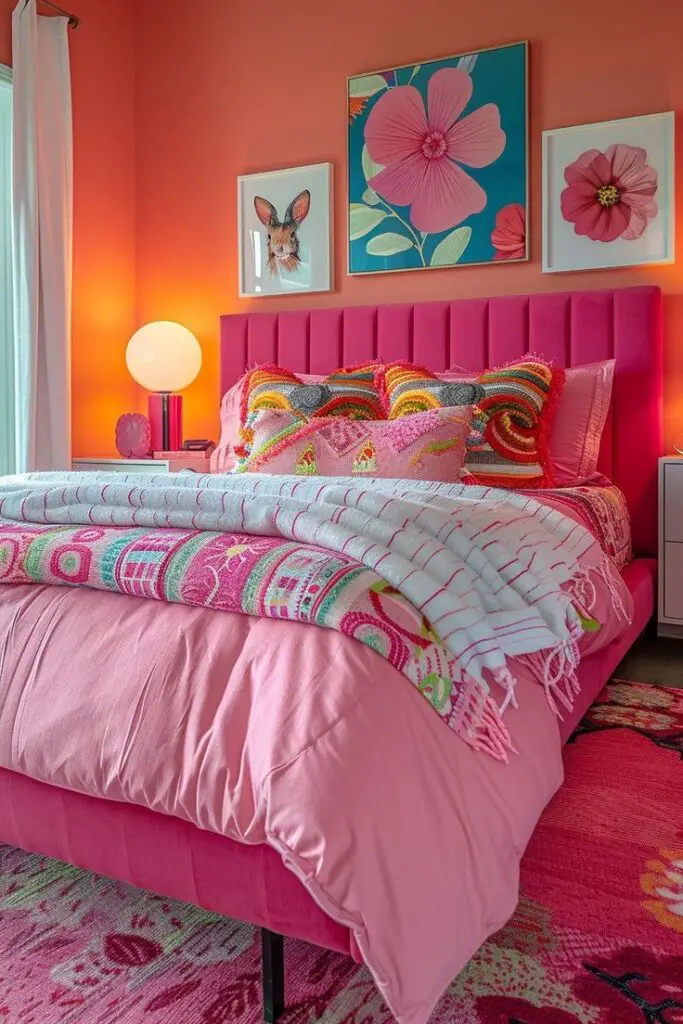
Choosing colors for your home isn’t just about what looks pretty, it’s about how you want the space to feel. Color can make a room feel airy or cozy, bold or peaceful, and it all comes down to how you use it. Check out 25 Colorful Bedroom Ideas to Lift Your Mood Instantly
In smaller rooms, soft and cool tones like pale blue or muted green can help open up the space. These lighter shades almost make the walls disappear, creating a sense of calm and space.
On the other side, bigger rooms can handle warmer and deeper colors like terracotta, mustard, or rich olive. These shades pull the space in just a little, making it feel welcoming
If you’re not sure where to start, you can’t go wrong with timeless neutrals. They’re easy to live with, easy to mix with, and you won’t get tired of them as quickly. Think creams, soft greys, and warm beiges, they’re always a safe bet.
One trick that really helps? Let your colors flow naturally. Darker tones work well on the floor, medium shades on the walls, and light colors up top.
When picking your palette, here’s a little cheat sheet that works like magic:
-
Use your neutral or base colors on the big stuff: floors, rugs, and sofas.
-
Let medium or stronger colors pop up on smaller items, like a chair, a side table, or a feature wall.
-
Save your boldest colors for little accent pieces: a cushion, artwork, or a single vase. Then, sprinkle that color in a few places around the room to tie it all together.
It’s not about following strict rules. It’s about creating a space that feels balanced, thoughtful, and true to you.
Playing With Pattern
Mixing patterns can make your home feel fun and full of life. You can pair checks with florals or mix big patterns with smaller ones.
Not sure how much is too much? A good rule is to stick with three patterns. Make sure they’re different in size but share similar colors, that way, everything still feels connected.
Try to repeat colors from your biggest pattern in the other ones too. This keeps things from looking messy.
You can even use the same pattern in a few places, like the walls, curtains, and pillows, to make the space feel pulled together.
Toying With Texture
Traditional rooms look best in refined, smooth textures.
Contemporary spaces need more textural interest.
Feminine rooms need elegant and subtle textures.
Masculine decor calls for bumpy, soft , thick, and rugged texture.
The more neutrally colored the room is, the more important texture becomes.
Heavy textures eat space, so use them only in large or cozy rooms.
Gather Inspiration:
Like I earlier said, there are different home décor style being putted up online. (20 Smart Home Decor Tips for Modern Homeowners), blogs, Instagram, and home decor magazines. You can scroll through, and save what catches your eye, until you are ready to get the work done.
What Decor Style Do You Love Most: Now that we know the different decor styles there is, which of the styles captures your fancy? Do you lean towards mediterranean, Traditional, bohemian, minimalist or modern?
Well, lets talk about them briefly;
Boho
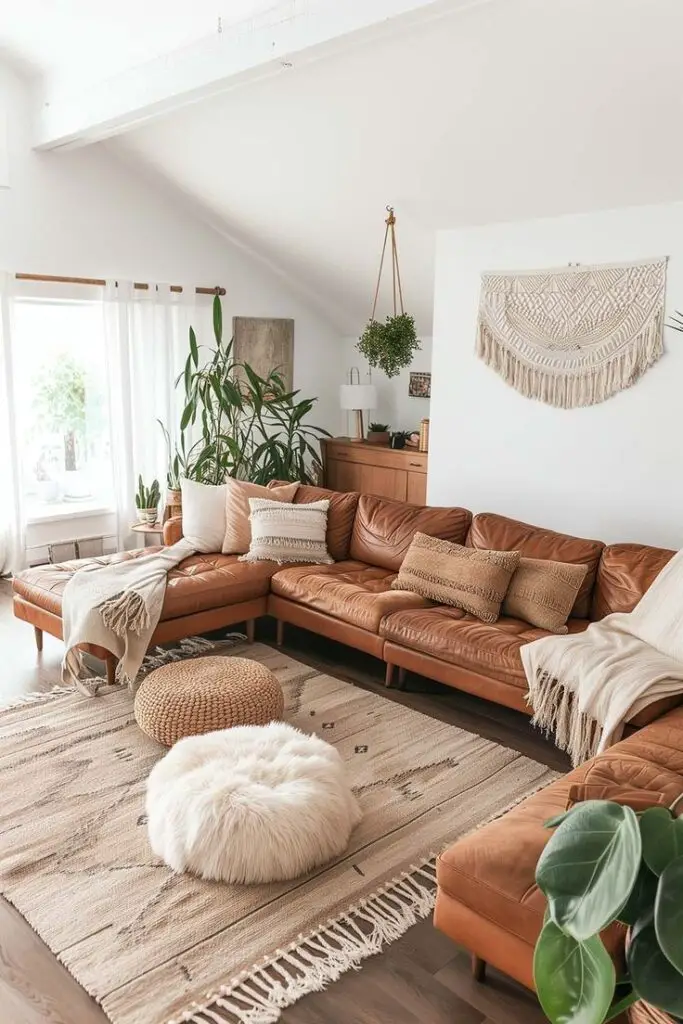
The boho style has become super popular in recent years and it’s easy to see why. It’s laid-back, creative, and doesn’t follow strict rules. With boho, almost anything goes, and that’s what makes it so fun.
You can mix and match different chairs around your dining table and it’ll still look great.
The style leans on natural materials like wood, rattan, and soft fabrics like cotton, mohair, or linen usually in earthy tones like beige, brown, or olive green.
To add some life, you can throw in bright colors like yellow or blue, bold patterns, fringes, or even detailed embroidery.
Handcrafted touches like batik prints, macramé wall hangings, or woven baskets bring that extra charm. You can even DIY some of these pieces yourself.
Mediterranean
For those who live in less sunny places and don’t want to miss out on the serenity and that seaside feeling, bringing the Mediterranean look into their home is the perfect option.
The key is a mix of light colours, earth tones, and splashes of warm accents.
Think white, beige, forest green, and terracotta complemented by orange, and azure blue.
The most popular materials include clay, raffia, and linen, as well as local olive or pine wood.
Don’t miss the opportunity to display colourful ceramic tableware and Mediterranean plants and herbs, which not only make for great accent but are also handy for cooking.
Minimalism
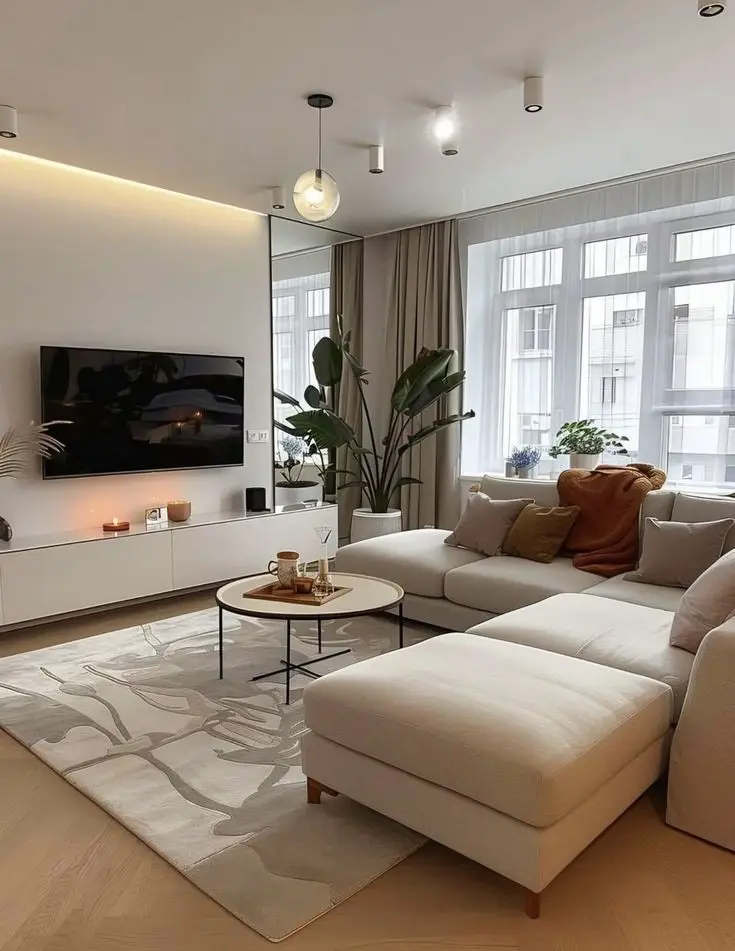
Minimalism isn’t just about clearing out your space or leaving walls bare. It’s about getting rid of unnecessary items and focusing on what really matters.
For example, a cozy sofa nook can replace several small chairs, and a dining table can also serve as a workspace. This all about making your home simpler, more functional, and free of clutter.
Traditional
Read on Eco Conscious Decor. As the name suggests, a classic or traditional style doesn’t follow the latest trends, it’s timeless.
The look usually starts with light ceilings and neutral walls in soft tones like cream, white, or sand. These act as a backdrop for darker, more ornate furniture made from solid woods like cherry, walnut, or chestnut.
To add life and color, fresh flowers in glass vases or bowls brighten up the space. Antique tables, often sourced from trusted dealers like
- Galerie du Passage in Paris
- Galerie Half in Los Angeles, bring a sense of history and elegance.
Tapestries or large mirrors with Baroque-inspired frames can add a touch of old-world charm to the walls.
With this classic style in mind, you likely already have a sense of how you want your home to feel. Now, it’s all about starting to style and bring that vision to life.
You can check out (33 Stunning Farmhouse Easter Decor Ideas
2. How to Choose a Style for Your Home?
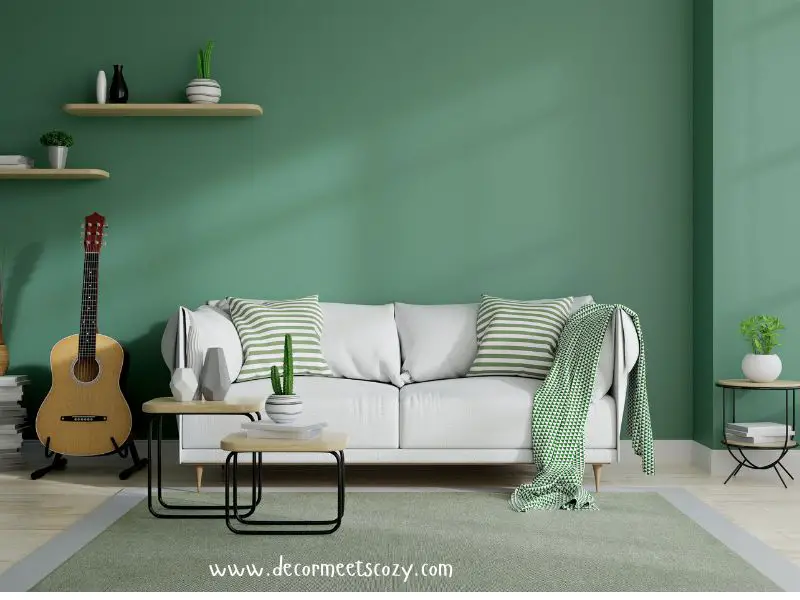
Choosing an interior design style for your home can feel really intimidating.
I still remember how so overwhelmed I was when I had to start decorating my walk in office. I loved and saved so many styles and had no idea on how to pick just one.
Well, once you have discovered what style you want it will be a lot easier
Start with What You Already Have:
Identify pieces you have handy and build around them. I love the quote, “Be faithful to your own taste because nothing you really like is ever out of style.
There are a thousand and one things in your closet or home that you can first use in styling your home
The following are some common objects that may be utilised as home decor:
- Furniture: This includes furniture such as sofas, chairs, tables, and cupboards. The design and substance of furniture may have a considerable influence on the overall appearance of your space.
- Wall Art: Paintings, prints, posters, and sculptures can be used to adorn your walls and add personality to your room.
- Rugs and Carpets: They not only give comfort and warmth, but they may also define a room’s colour palette and provide texture.
- Lighting: Lamps, chandeliers, pendant lights, and candles can be used to create various moods and atmospheres in different house spaces.
- Curtains and Drapes: Window coverings may provide flair and seclusion to a space while also being practical.
These are great home decor products which can turn any boring home into a beauty. You can buy all these items online and read more on (décor meets cozy).
Gone are the days of sticking to just one interior design style. Today’s homes embrace a thoughtful mix, where modern meets vintage, classic blends with contemporary, and every piece tells a story.
Here are some tips for creating a smooth interior design while keeping your home looking cohesive and put together.
1. Blend Elements Throughout Your Home
Instead of assigning a single style to each room, mix elements from multiple styles throughout your home
2. Start with a Neutral Foundation
A neutral backdrop provides the perfect foundation for mixing different styles without crowding the space. But neutrals aren’t limited to just beige and white. Earthy tones, rich browns, soft blues, deep greens, and warm greys also offer a versatile base that can adapt to any design.
3. Focus on Scale and Proportion
Mixing styles successfully isn’t just about aesthetics, it’s about balance. Pay attention to scale and proportion to ensure your pieces complement each other visually. I appreciate a bold play on scale from time to time, but knowing when and where to use it is what truly makes it impactful.
5. Use Repetition for Visual Flow
Repetition naturally ties together different styles. Look for recurring shapes, materials, and finishes in your pieces.
6. Highlight Personal Pieces That Tell a Story
A well-designed home isn’t just about following trends, it should tell your unique story. If it’s an heirloom quilt, a painting from your travels, or a vintage find from a flea market, these personal pieces help ground your space in meaning..
7. Create Dedicated Spaces for Standout Pieces
Not every treasured piece has to blend in. Designate spaces where unique or sentimental items can stand alone and add character.
For example, a mid-century chair might stand out in a traditional living room but look intentional in a reading nook. A framed antique pennant might not fit a formal space but works beautifully in a home office or library.
Give special pieces their moment, even if they don’t align perfectly with the rest of the decor.
8. Let Blank Space Work for You
Whitespace or intentional negative space are essential when mixing styles. It prevents a room from feeling overcrowded and allows key pieces to stand out.
A carefully placed open wall, a pared-back vignette, or a simple color palette creates a sense of calm and balance, making eclectic design feel elevated rather than cluttered.
9. Own Your Unique Style
At the end of the day, your home isn’t a showroom, it’s a reflection of you. The most beautiful spaces feel lived-in, collected, and layered over time.
Give yourself permission to mix eras, styles, and textures. Play with combinations that speak to you, and don’t be afraid to take design risks. Sometimes, the unexpected pairings like a sleek modern sofa with a rustic wooden coffee table become the most compelling focal points.
Your home should feel collected, not decorated, a space that evolves, tells a story.
3. What Are the 7 Basics of Interior Design?
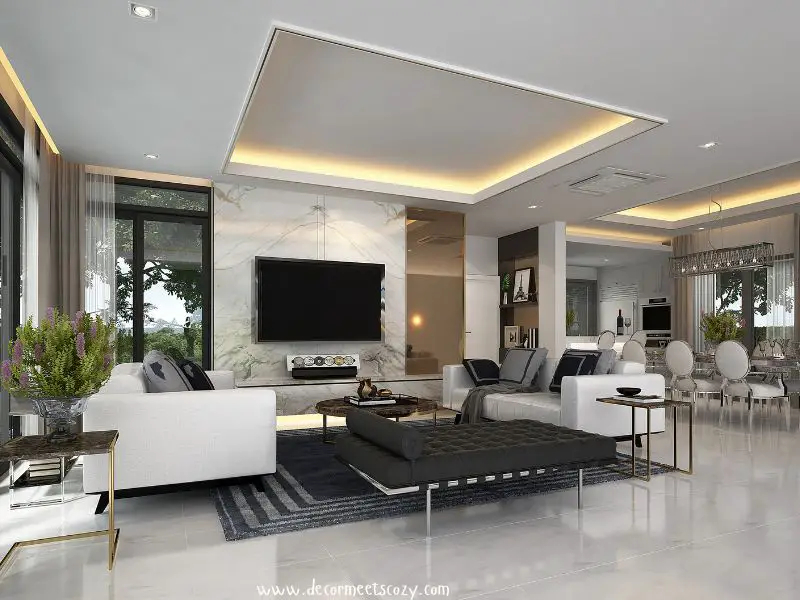
If you’ve ever walked into a room and felt, “This feels just right,” it’s likely these 7 design elements working together. Understanding them can help you create a space that feels put together, no degree needed. Let’s break them down:
1. Space
Every room has space, both filled (furniture) and open (walking areas). Balance is key. Leave some blank spaces, they help your room feel airy and not cramped.
2. Line
Lines guide the eye. Clean, straight lines can feel modern, while curves add softness. Vertical lines can make a room feel taller, and horizontal lines create calm.
3. Form
Form is all about shapes. Mixing round, square, or soft edges adds interest. When shapes complement each other, the room feels more balanced.
4. Light
Lighting sets the mood. Natural light brings energy, while soft lamps create coziness. Layer different lights for warmth and variety.
5. Color
Color changes the vibe. Neutrals make a room calm, while bold colors energize it. Choose shades you love to make the space feel yours.
6. Texture
Texture adds depth. A mix of smooth, rough, and soft materials makes a room feel rich and cozy. Think pillows, blankets, and rugs.
7. Pattern
Patterns bring personality. Use one bold pattern as a focal point, and balance it with smaller, simpler ones to avoid overwhelming the space.
Once you understand these 7 basics, decorating becomes so much easier. They’re like your building blocks use them together and your space will start to feel like it truly reflects you.
Now you have- A Beginner’s Guide on How To Find Your Home Decor Style